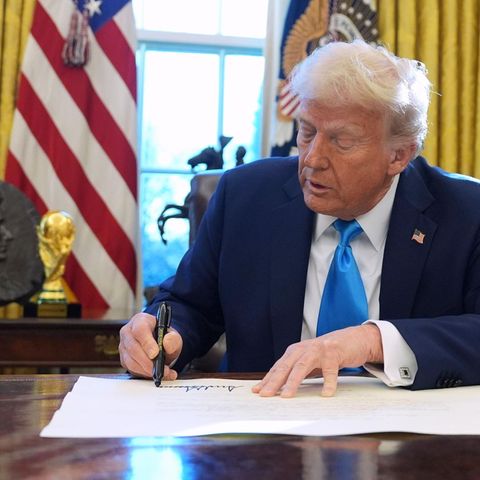The US economy contracted in the first quarter, weighed by a flood of goods imported by companies that sought to avoid greater costs, which underlines the disruptive character of the tariff policy, often chaotic, of the President Donald Trump.
The internal gross product (GDP) decreased to an annualized 0.3 % rate in the last quarter, according to the early estimate of the GDP of the first quarter published Wednesday by the Office of Economic Analysis of the Department of Commerce.
The economists surveyed by Reuters had predicted an increase of the GDP of 0.3 % in the period from January to March. However, the survey was conducted before the data that showed that the trade deficit of goods shot at a historical maximum in March, driven by record imports, which led most economists to drastically cut their growth estimates.
The economy had grown at a rate of 2.4 % in the fourth quarter. However, the report probably exaggerates the deterioration of economic perspectives, since consumer spending continued to grow, although moderately.
From Balanz Capital sThey have that the United States GDP slightly surprised down the first quarter by registering a 0.3% t/t drop (expected -0.2% but with a lot of variance in the forecasts) from +2.4% in 4q 24.
“This is the first fall of GDP in quarterly terms since the first quarter of 2022. The main factor behind the fall in GDP were net exports, which contributed negatively in 4.83 percentage points,” says the broker.
Inflation in the United States USA
Tariffs trigger imports and pushing the US GDP.
Alertacripto
This was due to a massive acceleration in imports due to tariffs, since 41.3% t/t annualized grew (from -1.9% in 4T) while exports only expanded 1.8% t/t (a). For the rest of the components, private consumption surprised up by showing a variation of 1.8% t/t (a) (expected +1.2), decelerating from 4.0% in 4T, and contributing 1.2pp to growth, mainly for services ( +1.1pp after an expansion of 2.4% and/y (a)).
On the side, private investment, it grew 21.9%, explained by a boom in equipment (+22.5%), while public consumption retracted 1.4%t/t. Despite the bad data of the GDP, the treasury bond rates reacted upwards, mainly because private consumption was somewhat more resilient to what is expected despite the deceleration with respect to 4T, and because the deflators of the GDP, both the total and the nucleus, were greater than expected (3.7% and 3.5% vs. 3.1% and 3.1%, respectively).
Treasury bond rates at 2 and 10 years operate with 1 and 4pbs rises, respectively, at 3.66% and 4.2%, respectively. The futures of the S&P 500 and the Nasdaq show falls of 0.9% and 1.3%, respectively.
Source: Ambito




